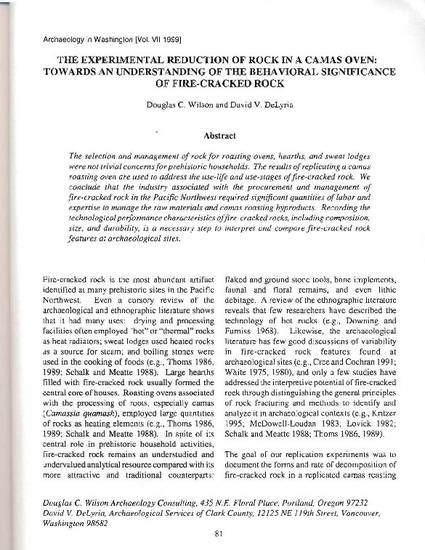
Article
The Experimental Reduction of Rock in a Camas Oven: Towards an Understanding of the Behavioral Significance of Fire-cracked Rock
Archaeology in Washington
Document Type
Article
Publication Date
1-1-1999
Subjects
- Archaeology -- Methodology,
- Stone implements -- Analysis,
- Excavations (Archaeology) -- Pacific Northwest Region,
- Prehistoric hearths
Disciplines
Abstract
The selection and management of rock for roasting ovens, hearths, and sweat lodges were not trivial concerns for prehistoric households. The results of replicating a camas roasting oven are used to address the use-life and use-stages of fire-cracked rock. We concluded that the industry associated with the procurement and management of fire-cracked rock in the Pacific Northwest required significant quantities of labor and expertise to manage the raw materials and camas roasting byproducts. Recording the technological performance characteristics of fire-cracked rocks, including composition, size, and durability, is a necessary step to interpret and compare fire-cracked rock features at archaeological sites.
Persistent Identifier
http://archives.pdx.edu/ds/psu/10538
Citation Information
Wilson, D. and DeLyria, D. (1999). The Experimental Reduction of Rock in a Camas Oven: Towards an Understanding of the Behavioral Significance of Fire-cracked Rock. Archaeology in Washington, (7).

This is the publisher's final PDF. This article was originally published in Archaeology in Washington